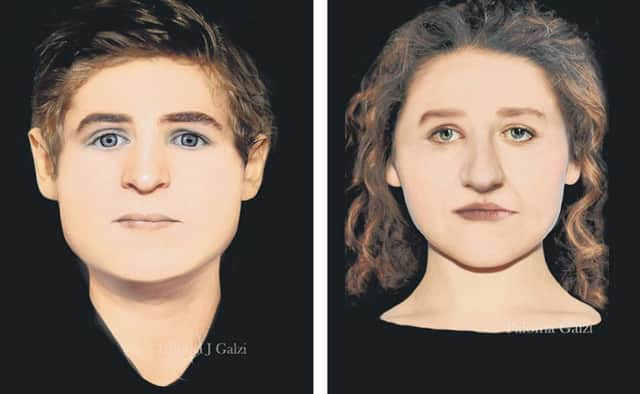Faces of medieval skeletons found during tram dig


Archaeologists unearthed the bodies of almost 400 men, women and children dating as far back as the 14th century when they carried out excavations in Leith ahead of the relocation of utility works in 2009.
They were found on the site of a previously unknown section of the South Leith Parish Church’s graveyard and a five-year project between the city council and Headland Archaeology was undertaken to analyse the bodies.
Advertisement
Hide AdPioneering forensic work was also carried out by a team from Dundee University which has allowed pictures to be created of what the medieval residents of the former burgh might have looked like some 500 years ago.
In total 302 complete or near complete burials were excavated with fragments of at least a further 100 individuals recovered – 33 bodies have been dated ranging from 1315 to 1638.
Archaeologist John Lawson said: “[If it wasn’t] for the tram project and the preparatory works we would never have found them or have known that section of graveyard was there.
“The bodies offer a fantastic glimpse into the area’s past. In archaeology you are always attempting to put a face on the past and thanks to these reconstructions we can do just that.
“The sample we uncovered is only 10 per cent of the entire graveyard, so we need to be careful in the conclusions we draw. Of the bodies sampled so far all are from the local area and none had suffered a violent death.” Mr Lawson also told how a Leith resident was shocked to see one of the three computer-generated faces.
He said: “We unveiled them at a meeting recently and a local woman told how one of the women looked very much like an elderly relative of hers. I have also passed people in the street who I swear bear more than a passing resemblance to one of the faces.”
Advertisement
Hide AdThe discovery is thought to be amongst some of the most significant medieval finds in Scottish history and could provide the first archaeological evidence for the medieval hospital of St Anthony’s, which was destroyed in the 16th century.
The adult female was buried in a communal grave. However, it is unclear whether her death and those buried with her were related to the plague.